Western Montana has been awash in Swainson’s Hawks this summer. From the Canadian border (Glacier County) to the southern border with Idaho (Beaverhead County) I found them in significantly larger numbers than I have seen in previous summers. I hope this very unscientific observation is accurate and that it bodes them well as a species because their numbers have been declining to the point where they are listed as a Species of Special Concern in several western states.
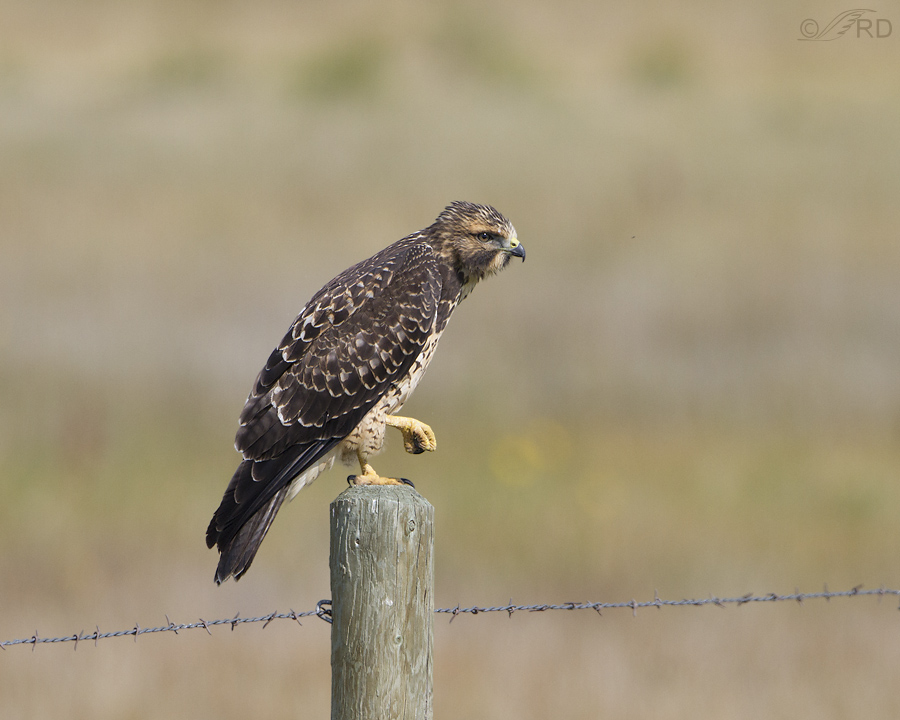
1/2000, f/7.1, ISO 500, 500 f/4
I found this handsome juvenile this past week along a county road in Beaverhead County. At first it was very relaxed and assumed this clenched fist pose that is so typical of many buteo species when they’re at ease and resting.
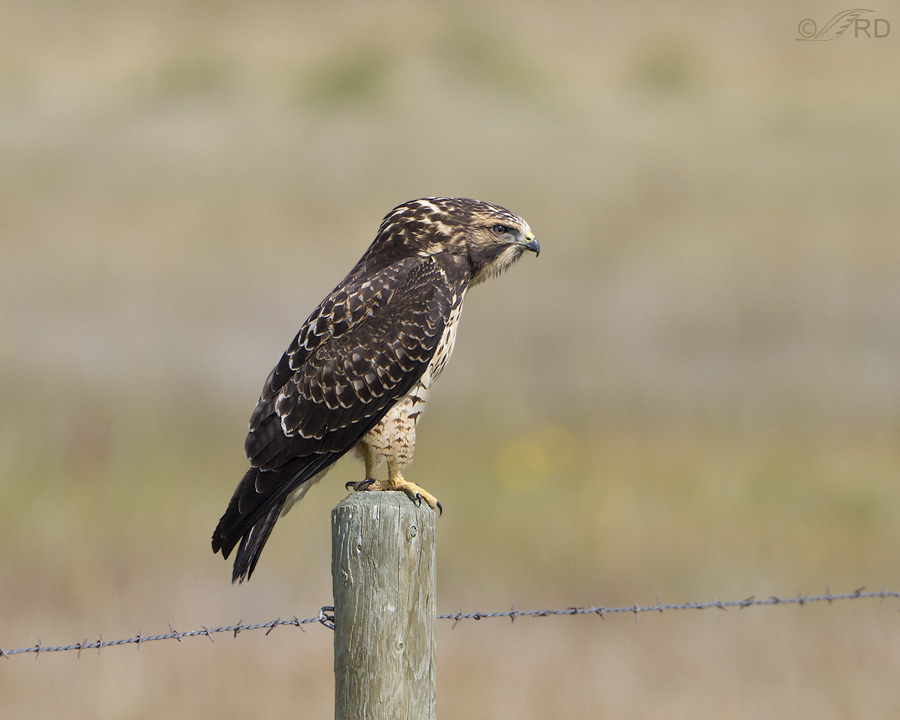
1/1600, f/7.1, ISO 500, 500 f/4
But soon it began to arch its neck and I recognized that it was about to attempt to expel a pellet. I had already taken my tc off in anticipation of take-off so I decided to leave it off because so often in the past I’ve missed the falling pellet as it dropped out of frame at the bottom.
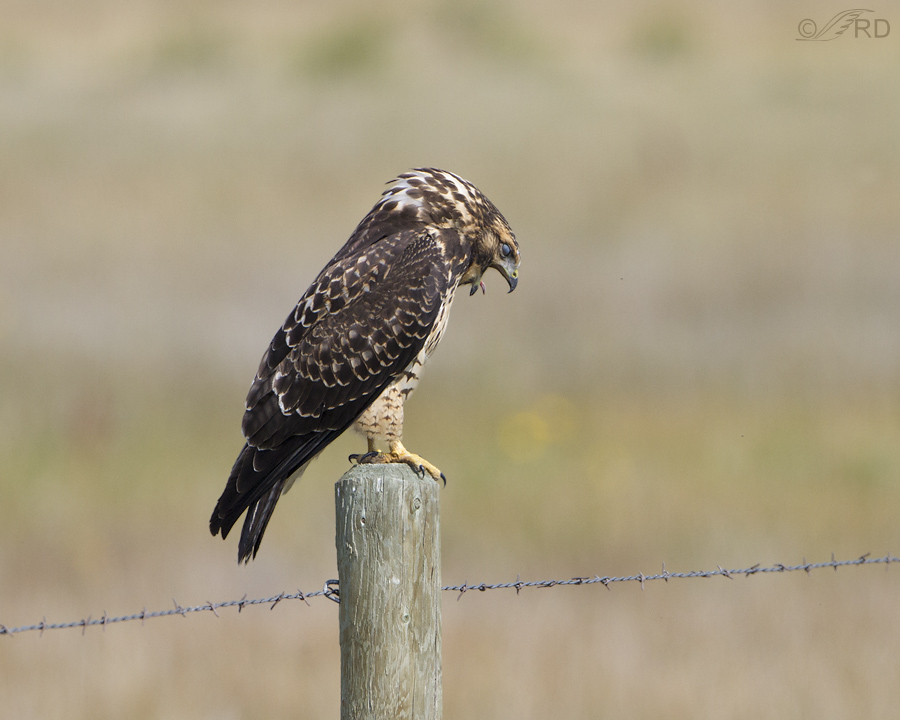
1/2000, f/7.1, ISO 500, 500 f/4
Then, with the nictitating membrane pulled over the eye, the bird began to retch.
These few images showing pellet ejection may give the viewer the impression that it all happened very quickly. It didn’t. From beginning to end the whole process took over four minutes. During that time there were alternating periods of retching and resting and it didn’t look to be a particularly pleasant experience for the hawk.
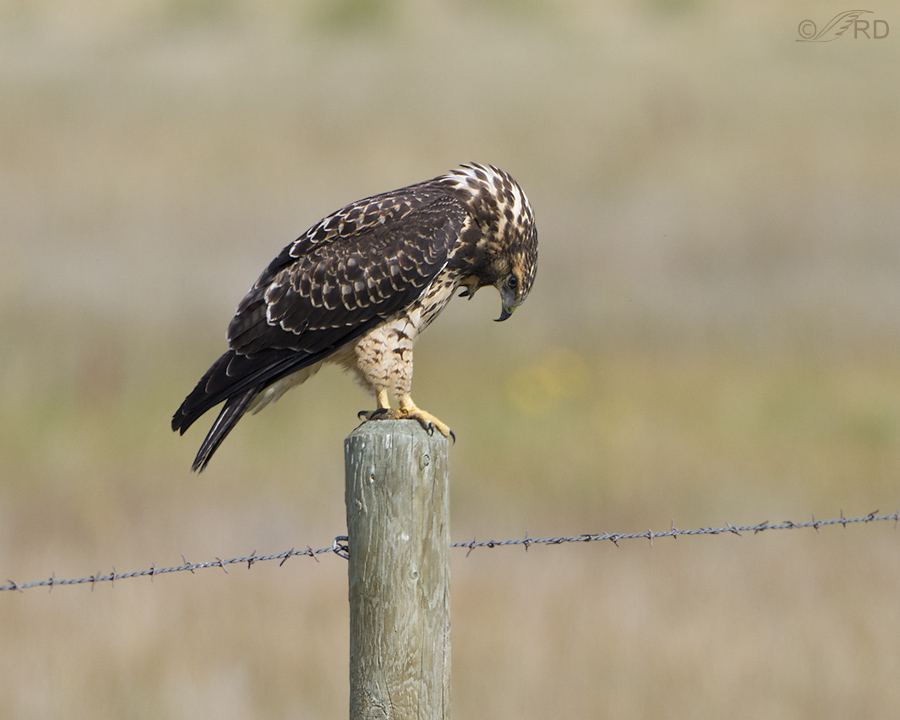
1/2000, f/7.1, ISO 500, 500 f/4
There was no light in the eye in many of my images but I wanted to include a shot with the bird in this posture to show the effort required to expel the pellet.
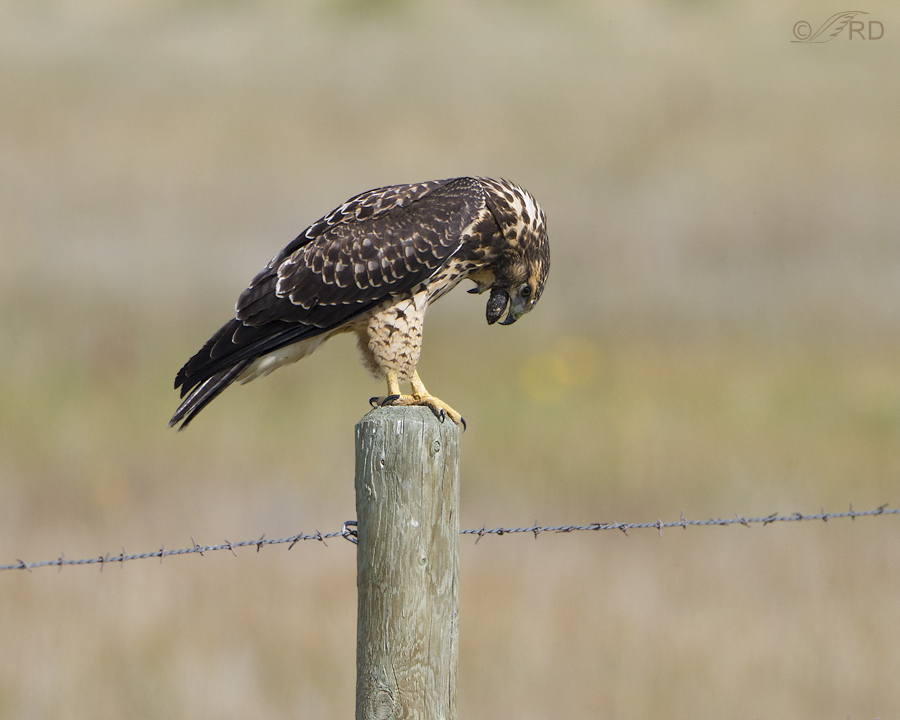
1/2000, f/7.1, ISO 500, 500 f/4
Here the pellet begins to emerge.
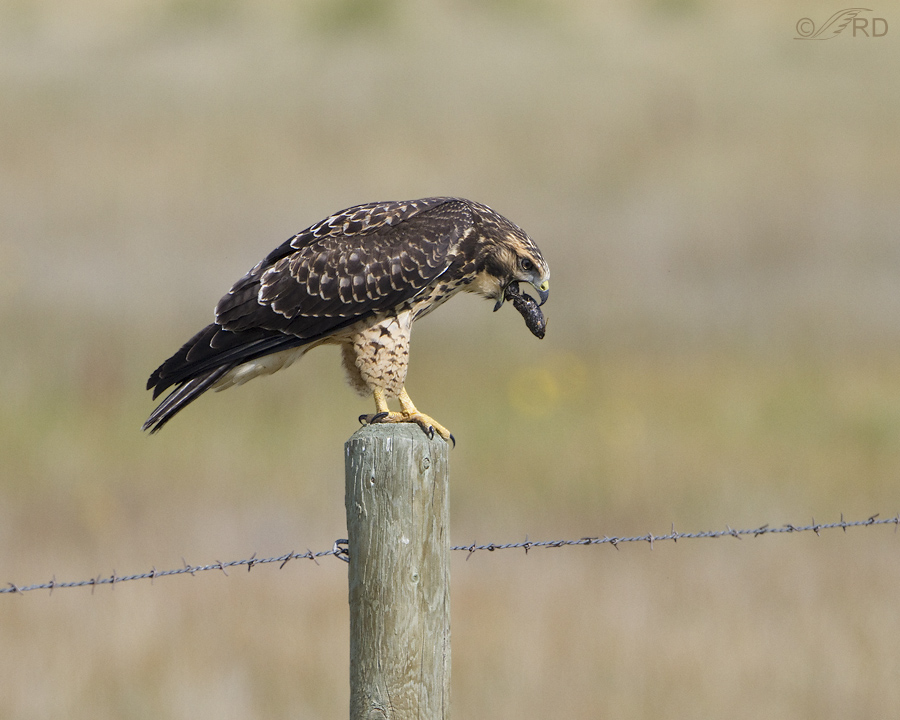
1/2000, f/7.1, ISO 500, 500 f/4
As the first pellet clears the beak you can see that there’s a second pellet lined up right behind it.
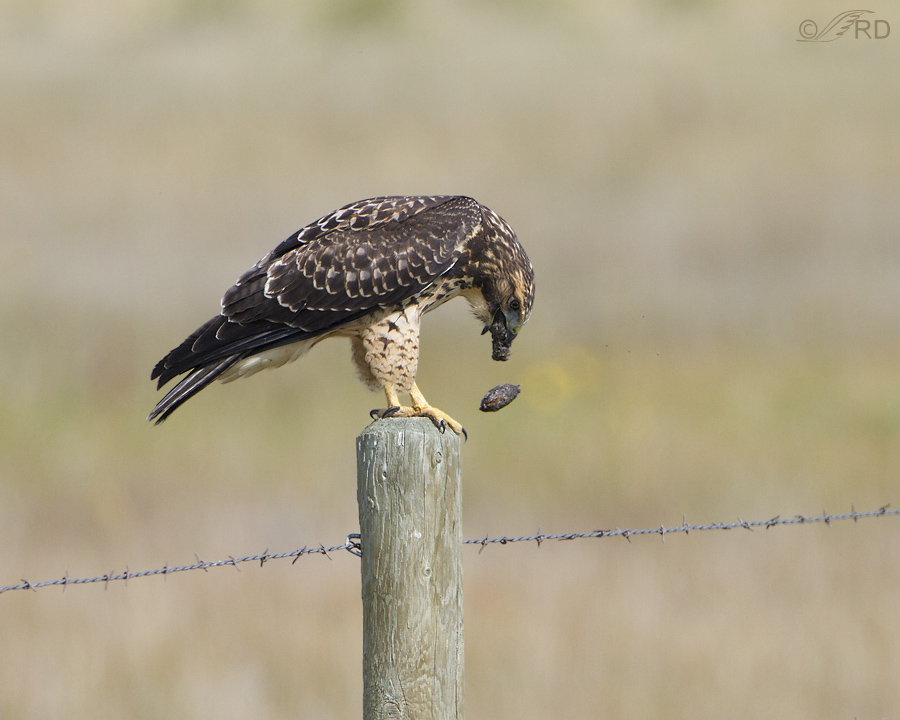
1/2000, f/7.1, ISO 500, 500 f/4
The first pellet begins to drop to the ground.
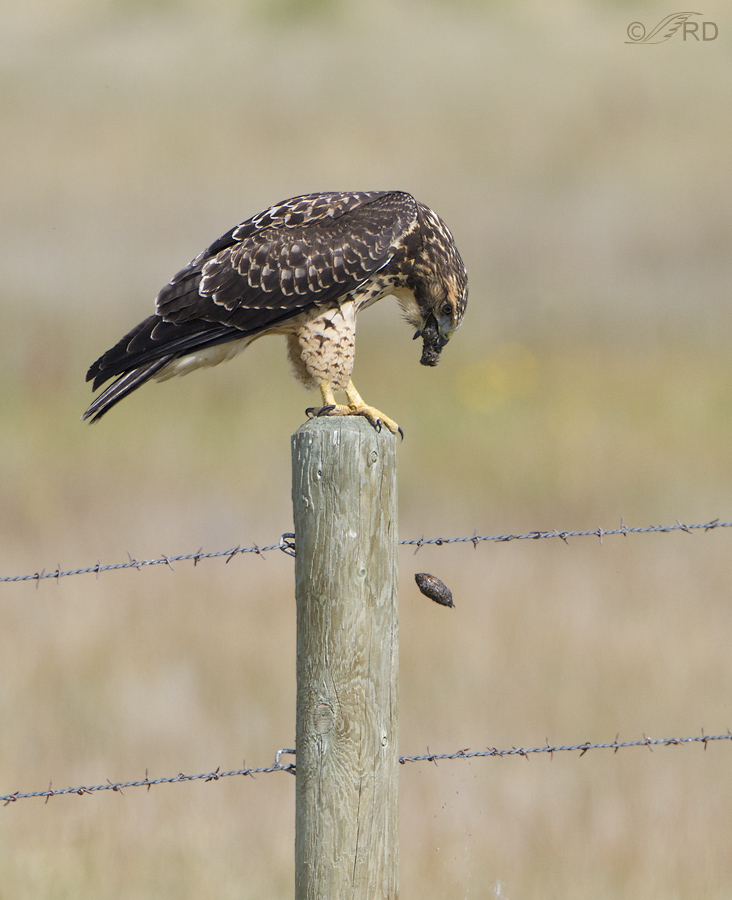
1/2000, f/7.1, ISO 500, 500 f/4
But the larger second pellet is being a little stubborn.
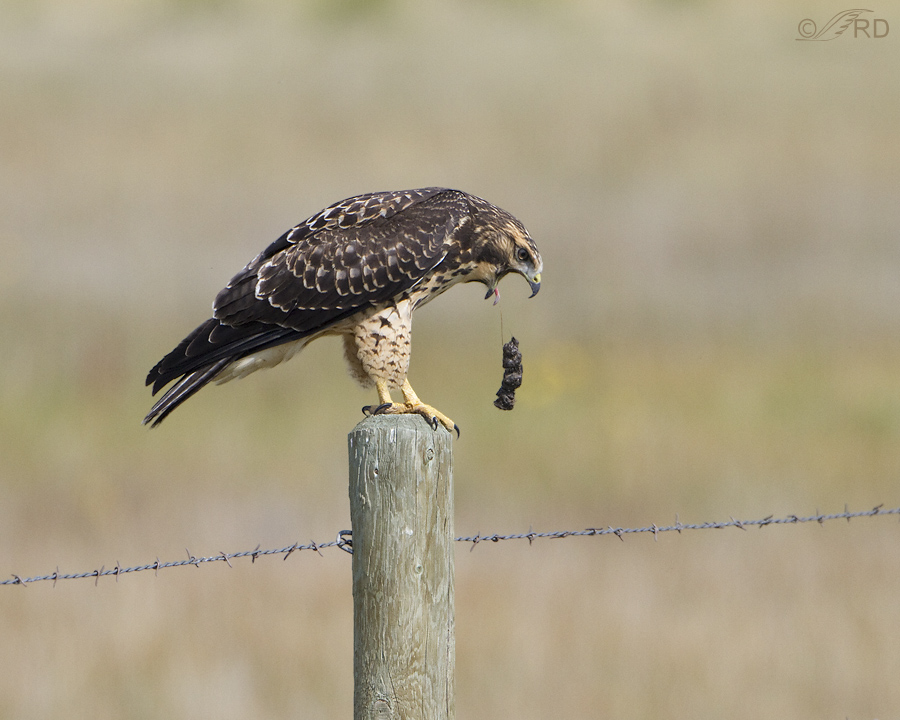
1/2000, f/7.1, ISO 500, 500 f/4
Then the second pellet finally emerges…
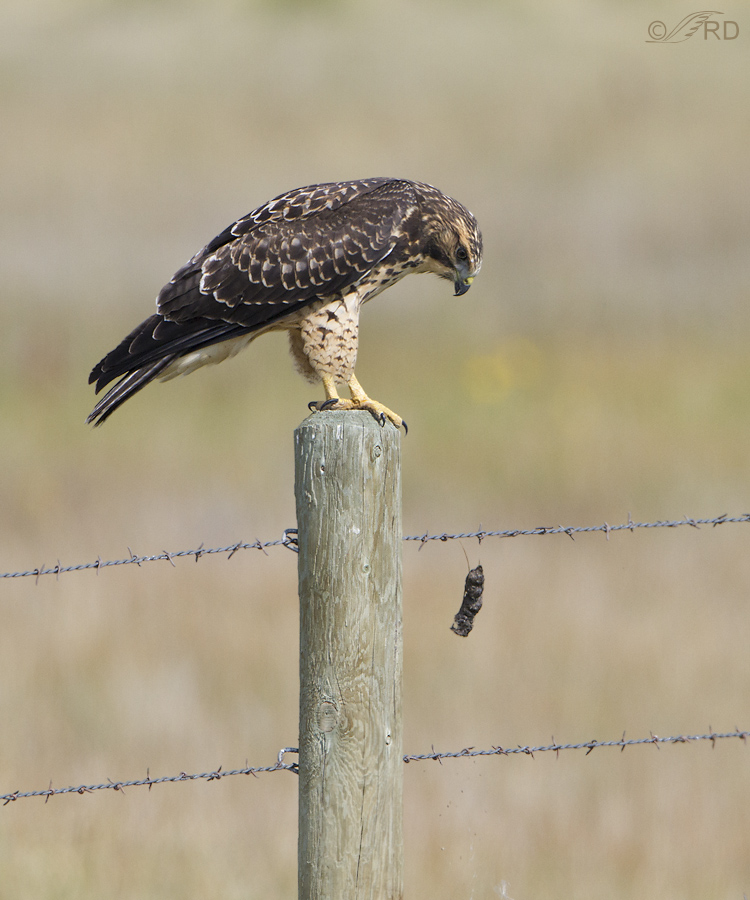
1/2000, f/7.1, ISO 500, 500 f/4
and falls to the ground.
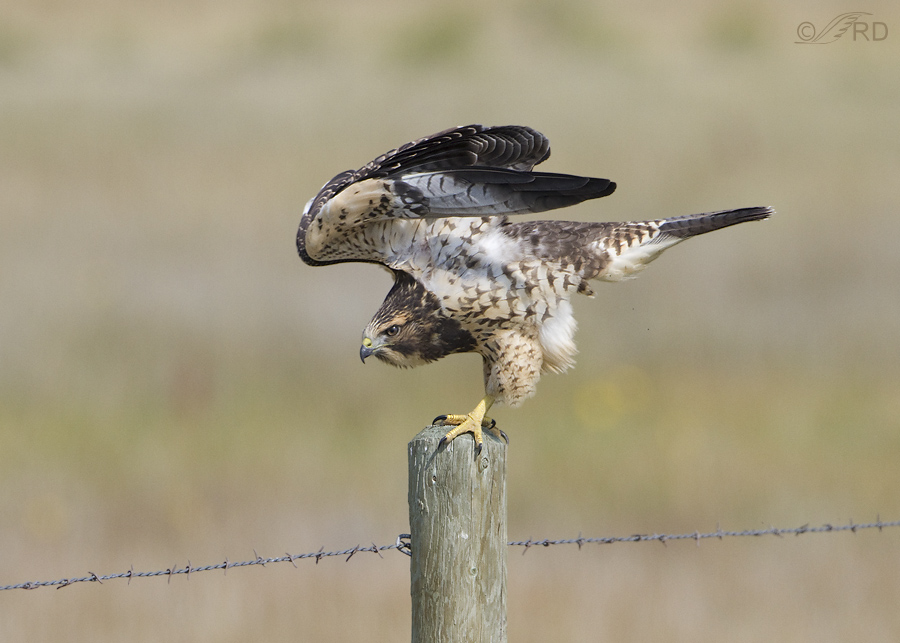
1/1600, f/7.1, ISO 500, 500 f/4
Soon after the last pellet was ejected the hawk turned on the perch and gave me a nice wing stretch – almost as if to demonstrate its relief that the whole unpleasant experience was now in the past.
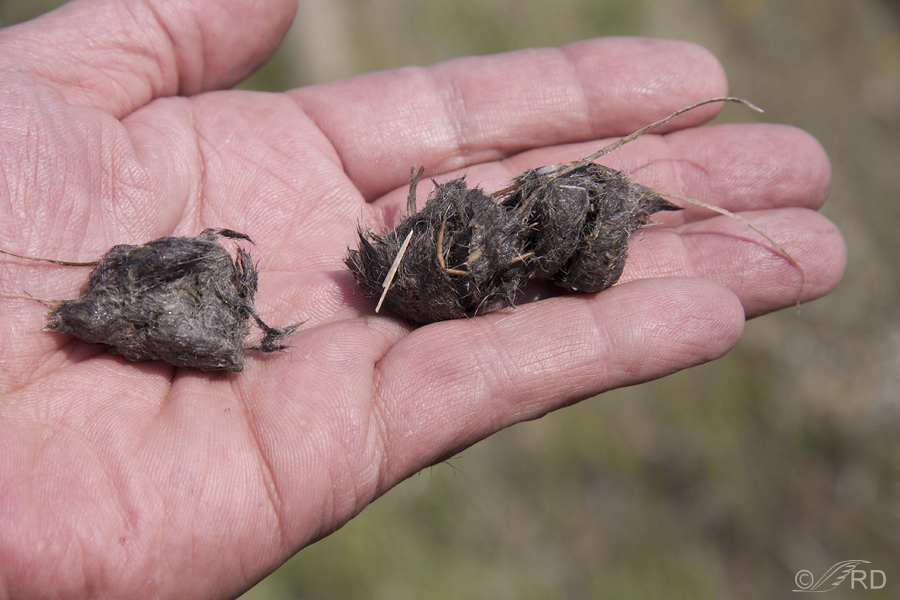
When the hawk flew off I retrieved both pellets – still wet and warm.
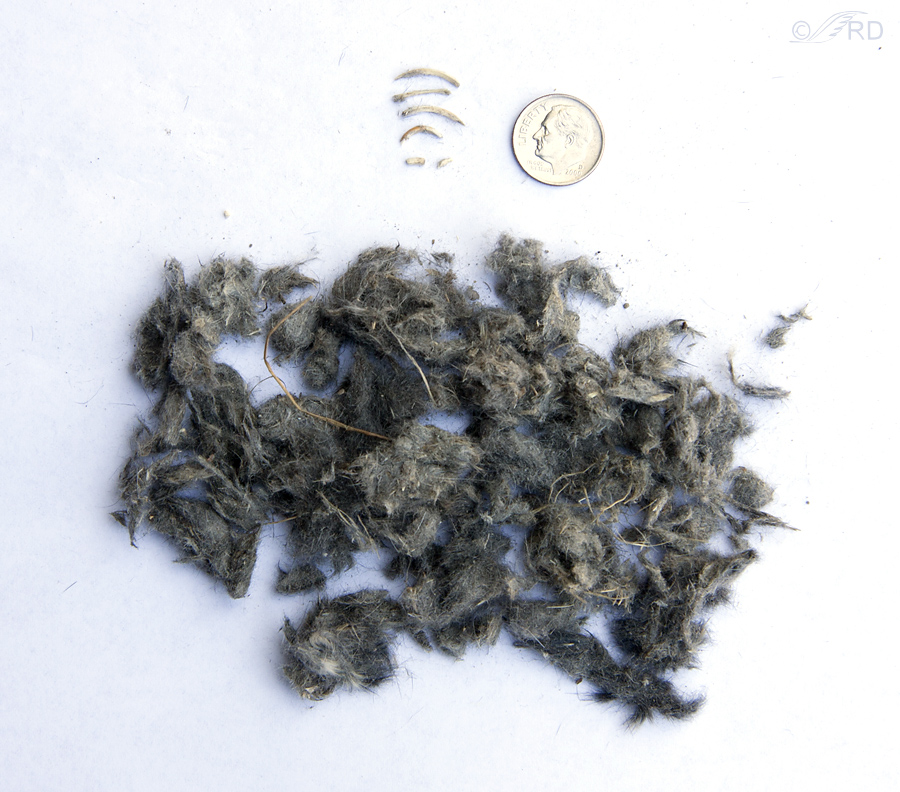
When I got home a few days later I carefully dissected both pellets. They consisted almost entirely of small mammal fur (meadow voles?) with only four small bones (ribs?) and two tiny bone fragments along with a few stray grass stems. There were no chitonous insect exoskeletons to be found, which surprised me. I know that grasshoppers form a major part of their diet and in past years I had observed these birds eating grasshoppers in the same area. This year there were grasshoppers galore where I found this bird so I had assumed it was primarily eating Orthopterans.
So I did a little research. It turns out that Swainson’s Hawks do eat mostly insects, especially grasshoppers, for much of the year but during breeding season they switch their diet to rodents, rabbits and reptiles. Another reminder to me of the potential pitfalls of making assumptions…
Ron


We enjoyed your photos. What a great use of the internet- sharing beauty and information for learners of all ages. Norwalk, CT
Excellent naturalist work. Thank you for sharing all your photos. One question : Could be the 4 bones rodent teeth ?
It is usually what is not digested by the hawks. But it could be ribs as well. What do you reckon then ?
Thank you.
Thank you, Qassim. I’m pretty sure they weren’t teeth. That was my first assumption too, but when I checked them out carefully they just looked more like bones than teeth.
Thanks for a special treat seeing a bird function I knew nothing about. And thanks for sharing your vast experience in bird knowledge and photographic skills.
Regards,
Charlie
Thanks very much Charlie. Good having you back on NPN.
Ok, so I did enjoy this post very much, even though it was somewhat gross (“still wet and warm”). It’s fun to see your passion in action, and so appreciated!
Thank you Baby Sis (just so folks know, this really is my younger sister) – see, I knew you could look at these shots and survive! Not sure how well Randy would handle them though…
Interesting series showing the pellet being expelled. It does not look like a pleasant experience but obviously a necessary one and I was amazed to read about how long this process took. Wonderful and informative post Ron, well done.
I was quite surprised by how long it took too Jim. In many smller birds it takes much less time. Perhaps it was because of the size of the bird or the fact that it was expelling multiple pellets and one of them was quite long. Who knows, but it piques my curiosity…
I posted on FB and my college Prof Carole Meredith wrote: An amazing sequence of photographs! She discovered that Cab Sauvignon is a cross between Cab Franc and Sauv. Blanc, and also that Zinfandel originated in Croatia!
Thanks for the FB post Nicole. Your Prof. Meredith sounds like a lady of varied interests.
Why is it us normal folk rarely witness this, but raptors see you and start hucking pellets as if on cue? Lol. Great natural science lesson Ron, pushed over the top by your stellar imagery. The pellet sequence is exceptional and the wing stretch photo is a knockout.
Thanks a lot Mike, I got a kick out of your first sentence. Actually I haven’t photographed raptors hucking pellets all that often – and when I do the light is often poor or the bird has its back to me, or my buffer fills up at the absolutely worst time. Some things just came together this time – finally.
cool to see the pellets, Ron! I’ve dissected some raven pellets that I have found around here and would like to do more–it’s interesting to see how their diet shifts at different times.
Brian, When I find a pellet, no matter the species that produced it, I’m curious about its contents. Who knows what will turn up… Hope things are going well down Grand Canyon way!
A true example of pictures being worth a thousand words! I give introductory lectures on the natural history of hawks and often refer to this behavior, but I have only seen it once and, since I am not a photographer, didn’t capture it. Wonderful images and VERY informative. Please keep up the good work!
Thanks so much Dick. As a retired science teacher I’m delighted that this post might possibly have been helpful to you in some way. And I’ll throw it back to you – “keep up the good work” with your lectures.
FASCINATING! And such incredible shots. What a wonderful post… Thanks so much for sharing the details, accompanied by such glorious images. Here’s to protecting this amazing creature….
Glad to hear you liked the details Christina. I’m sometimes a bit concerned about going too far in that direction.
Inquiring minds do want all the details and along with the photography this is what makes your site exceptional.
I appreciate the compliment Phyllis.
COOL!!!!!
Ron:
I enjoy your blog because it is more than pretty pictures. Dissected hawk pellets … I don’t see that on the usual sites where bird photos are posted.
Inquiring minds want to know ….
Dave
Hey Dave, as a teacher I always loved “inquiring minds” so I’m glad there’s apparently still a bunch of them out there. Hunker down for that storm!
These are incredible shots and you captureed the effort involved superbly. Like Bryce, I really liked the dissection shot and the additional knowledge to store in the rag bag in my head. Thank you.
Good, then my decision to include the pellet shots was apparently the right one. Thanks Elephant’s Child.
Exceptional post Ron. Coupling the photography with the discussion on the pellets, especially the shot after dissection, is a direction you should fully embrace in the future. The young SWHA expelling these pellets is incredible in itself, but continuing to dissect the pellets and exploring things about the bird is something I love reading about and really adds to your post. This is great work.
Thank you Bryce. I’m glad to get your input on the “extra” info and photos I included regarding the pellets themselves. I was wondering if I’d gone too far with that.
Oh my goodness! OMG! Fantastic shots, Ron! And once again, I thank you for this most informative, enjoyable nature forum!
Thanks very much Tana, I always appreciate your encouragement, a lot!